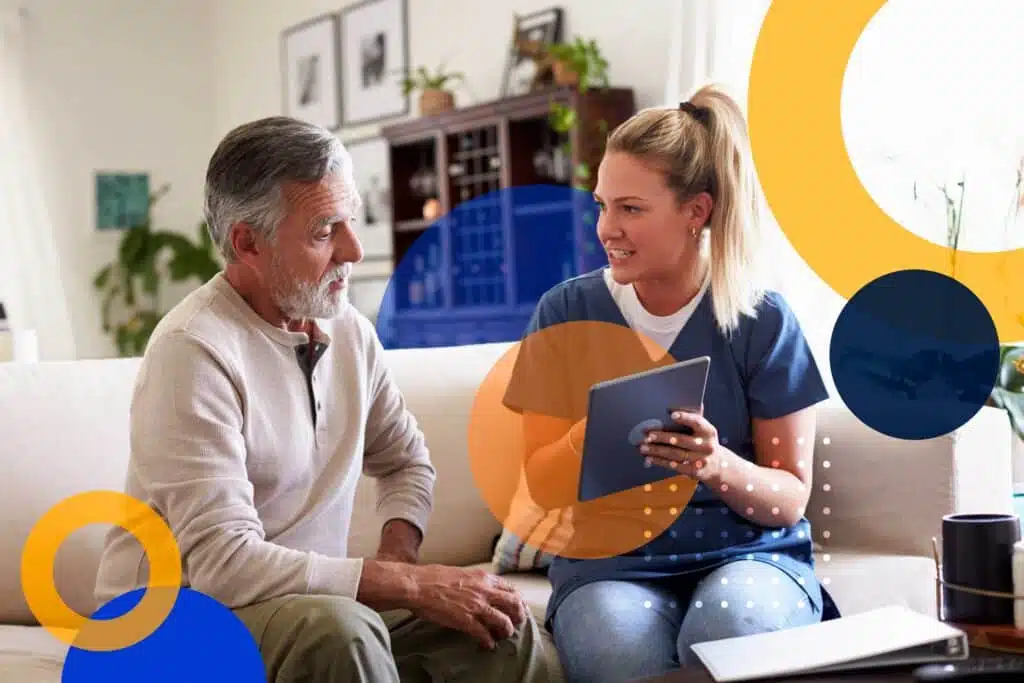Blog
CDC and RPM: Acronyms of the Future of Home Care in Australia

There’s no question that Australia’s homecare market is undergoing rapid, massive change. With over three million adults over 65, a number expected to rise to nearly eight million by 2044, there is a sense of urgency to ensure that the right care is in place to meet the demands of an aging population.
There’s more. Half of the 240,000 workers in the aged care sector will be eyeing retirement themselves in the next 15 years. Aggressive recruitment measures aside, health care agencies are now looking towards the transformative power of technology to improve care delivery and empower consumer directed care (CDC).
Australia is already making great strides in digital health. For example, the nation will have the world’s highest participation rate in a national health record system this year through My Health Record, enabling members of healthcare teams to have ready access to key health information for patients and clients. In addition, the first stage of the Increasing Choice in Home Care Measure, introduced with the 2015 budget, was implemented almost a year ago, requiring all home care packages to be delivered on a CDC basis. This means individual consumers now have greater choice over the types of care and services they access, who delivers those services, and how and when they’re delivered. And the second stage will be introduced in July 2018 with the Integrated Care At Home Program, which will fuse Home Care Packages and the Commonwealth Home Support Programme into a single care-at-home programme.
With impactful change underway, home care agencies considering an all-in-one technology solution are encouraged to take a long-term view beyond the immediate legislative requirements to consider the needs of the home care landscape of the future. That ensures they will be well-aligned for the future of CDC within a truly integrated health network.
The long view must include consideration for a solution with telehealth capabilities, which through remote patient monitoring (RPM) can provide clinical information on vitals, fall detection and GPS location streaming in real-time. This, in turn allows for greater transparency in data sharing and coordination, allowing clients to remain in their homes longer and in greater comfort, ultimately lessening the burden on hospitals, nursing homes and other care facilities.
Here’s a deeper dive into some of the benefits:
Seamless client-directed care: Given the opportunity, clients have an incredible capacity to care for themselves. That’s crucial, given that the country’s ability to care for our aging population is under strain. Clients want to stay at home, and if they’re empowered to care for themselves in a safe and reliable manner, they can achieve better health outcomes.
RPM allows clients to receive medical care in their own homes. While no tech solution completely replaces an in-person visit, RPM can make virtual home care visits possible, where and when it make sense. This is particularly important for clients who live in rural areas, and is also a major benefit for caregivers, particularly given the very real issue of staff shortages.
Real-time communication: Receiving up-to-the-minute data enables preemptive care that can either prevent unnecessary hospital visits or promote more efficient interactions between clients and their care providers. Consider advances already underway with wearable technology, for example, which can continuously transmit data about a patient’s vital signs, physical activity and more. Here, a patient with a normally high step count that inexplicably plummets could signal an immediate need to check-in. ECG patches that monitor heart rate and respiration that can automatically upload vital signs data for ongoing analysis. We’re only starting to uncover all of the possibilities.
AlayaCare is well-versed in the needs of the Australian market and is dedicated to building the best product possible to transform the homecare industry. With a modernized, consumer-focused platform, we believe we can dramatically improve operations for aged care providers and ultimately achieve better health outcomes.
We’re committed to keeping this conversation going. We’ll soon release our award-winning paper on SmartCoach — a cost-effective telehealth solution that combines remote patient monitoring with machine learning algorithms to manage and treat seniors living with chronic disease. This truly innovative technology has the potential to improve healthcare system efficiency and patient safety in Australia and around the world. Watch this space for more!


